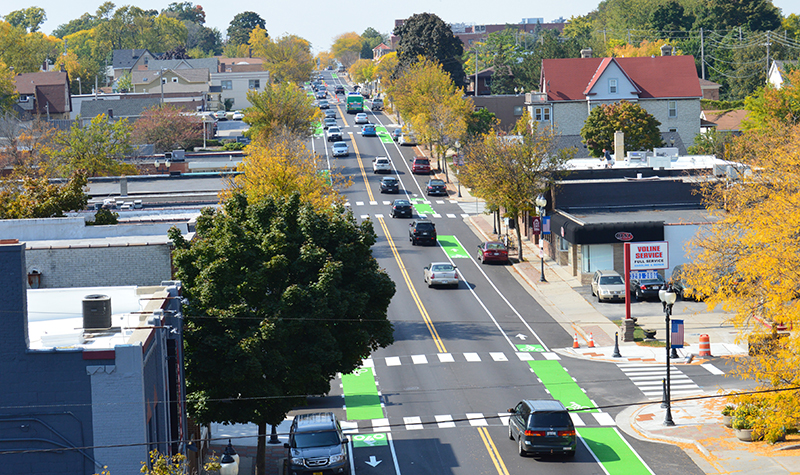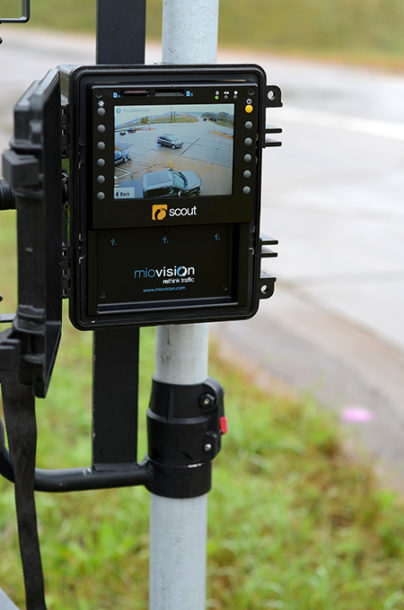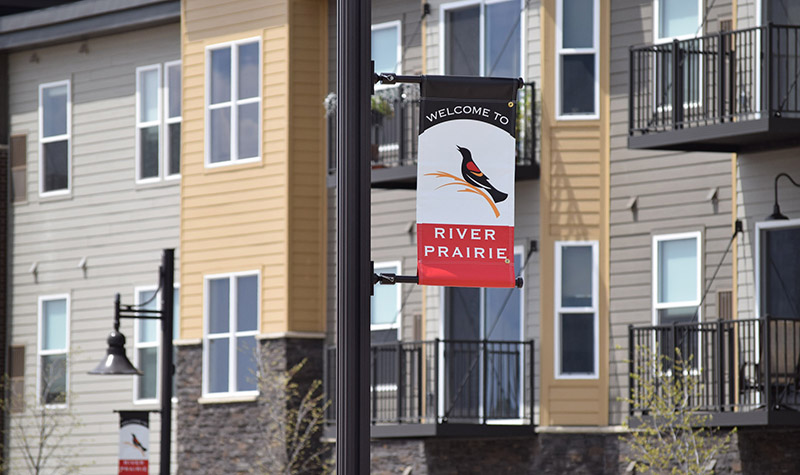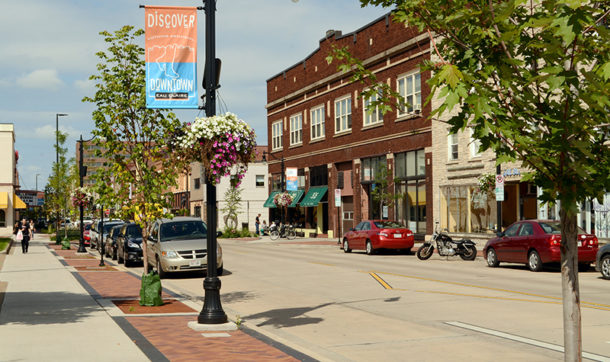The Ins and Outs of Traffic Studies

The need for new developments and the adaptive reuse of repurposing older built spaces is constantly growing. Although the momentum of housing projects and developments may vary with the health of the economy and changing market conditions, there is a constant drive to provide the living spaces that our society needs. Our communities and transportation networks are continually evolving to better serve the interests of the public. Through innovation, we move forward with new structures, enhanced resources, and modern facilities to improve quality of life.

About the Expert:
Alexander Cowan, PE, PTOE, is a traffic engineer based in our Waukesha, Wisconsin, office. He has over 14 years of experience in intersection and signal design, traffic analysis, and transportation management plans. Alexander specializes in microsimulation modeling.
Proposed developments, planned subdivisions, site reconfigurations, and a variety of other initiatives have the potential to bring positive change. As new developments are established, it can seem as though the process of bringing these new resources to life moves quickly. Conversely, it’s important to remember that these projects require a great deal of foresight and planning to be successful. When done correctly, these projects come to life with efficient traffic operations and the safe movement of pedestrians, bicyclists, and vehicles. However, when done poorly, an inefficient or unsafe transportation network can be obvious.
Therefore, local community, county, and state transportation engineers and planners rely on a specialized, comprehensive study called a traffic impact analysis (TIA) to identify potential traffic issues that could stem from proposed projects and if necessary, to design mitigation features that will keep the area’s transportation system running smoothly for all users. For new and reimagined residential developments, this means ensuring that residents can access their new neighborhood and find adequate parking, while still balancing the needs of the natural environment and accommodating potential mixed-use developments.
What Does a TIA Examine?
A TIA, also referred to as a traffic impact study (TIS), considers roadway and intersection capacity and operational and safety improvements. The study includes potential effects on transit, vehicle, bicycle, and pedestrian facilities to determine what challenges or issues may arise by the potential increase in, or rerouting of, traffic associated with a new development. A TIA supports sound decision-making by government authorities and developers through the examination of:
- Existing traffic conditions (before potential development)
- Expected increase and redistribution of traffic associated with the development
- Estimated future traffic conditions (both with and without development)
- Capacity of the existing and planned transportation system
- Additional transportation needs required to maintain a satisfactory level of service for all users
- Recommended improvements to accommodate expected traffic attributed to development
To complete a TIA, engineers first take a close look at not only the site plan but also the surrounding land uses within the project area. Questions such as, “What’s the density of this development?” and, “How large will the development ultimately be?” help to define the study area for the transportation network that is going to be most affected. In some cases, a small residential development may require the evaluation of only a few key intersections. In others, a large mixed-use neighborhood could call for a wider review of major roadways within the community’s transportation network. Communication with the local reviewing authority is key at this point. Early coordination can ensure that the study is adequately addressing the concerns of the local community and can help expedite the approval process later.

Once the study area is identified and prior to development, traffic data is collected for the roadway system and an analysis is completed to understand how the existing system operates today. An analysis of the future conditions is also completed to understand how the existing system would operate if the development were not built. These two analyses establish a baseline that the rest of the TIA builds from.
The expected number of new trips to be generated by the development is estimated using research from similar land uses. When these new trips are layered onto the existing system, conclusions can be drawn about what improvements, if any, are needed to maintain an acceptable quality of traffic flow.
At the same time as the public roadway system is being evaluated, the internal site circulation is reviewed to make sure all users can adequately move about the new development. This can include passenger vehicles, pedestrians, bicyclists, and transit. Additionally, larger trucks may need to access the site, to make deliveries to mixed-use spaces or collect garbage.
Ayres is most often retained to conduct a full TIA with a comprehensive analysis and detailed report on the development area and nearby transportation system. On average, the process is completed in three to six months. However, TIA content can vary depending on the size and complexity of the project. A TIA for a less complicated project may consist of a cursory review to verify that the expected number of new trips is minimal. Or, for areas that already have a comprehensive plan that was previously completed, the review may require only a traffic compliance letter from a qualified transportation professional.
Does This Project Need a TIA?
Different jurisdictions have different requirements, but typically a TIA is required when the proposed development generates a certain threshold of new trips. The Institute of Transportation Engineers (ITE) suggests that a TIA be conducted whenever a proposed development will generate 100 or more new trips during the adjacent roadway’s peak hour (ITE’s Transportation Impact Analyses for Site Development).
Requirements vary from state to state, and local governments may also have their own guidelines regarding the necessity of a TIA. The decision for the study requirement may also consider factors such as traffic generated by nearby developments or current issues with safety or congestion along the adjacent roadways. Typically, when new developments are proposed for sensitive areas or are likely to generate substantial new traffic, a TIA is warranted. In some cases, communities will also request a Travel Demand Management Plan (TDM) to identify strategies for reducing the reliance on single-occupancy vehicles.
A TIA is also helpful in situations where:
- Transportation problems are evident
- Major roadway improvements or reconstruction is proposed
- Transportation impact fees may be charged by local government
- Unusual circumstances necessitate judicial discretion or judgment
Multi-Family Residential Sites
A TIA for multi-family residential developments follows the typical study process. A key consideration of this study is whether the site will include a mix of retail or commercial land use, as traffic generated by retail spaces can exhibit very different characteristics than residential trips. An assessment of internal site circulation is often essential for a multi-family residential Traffic Impact Analysis (TIA), particularly when underground or first-floor parking is available. The focus is on determining effective parking access to these spaces. Additionally, consideration needs to be given to the internal connections of sidewalks and trails to provide pedestrians and bicyclists access to the greater transportation network.

When higher-density residential developments are proposed near single-family housing there is often concern from adjacent residents. A TIA can look at several different site configurations and help determine the optimal layout. One solution is to diversify the building size and density so that lower-density, smaller buildings can be placed closest to adjacent properties, and then increase the building size and density across the site and away from single-family homes.
When rezoning is required, adjacent residents may express concern over potential traffic congestion from higher-density residential developments. It can be valuable to communicate that residential development typically generates less traffic than commercial uses in the same space. A coffee shop, gas station, or fast-food restaurant (or multiples of each) will generate much higher traffic volumes than most residential developments, throughout the day. Having a TIA that proves this to be the case can be a valuable asset.
Making the Grade
Next time you’re maneuvering for a parking spot at the mall, biking to work at your office, or strolling through that new residential development, keep in mind that “quality traffic flow” doesn’t necessarily equate to “zero congestion.”
The Transportation Research Board grades traffic flow from A to F. But surprisingly, an A grade isn’t always a good thing. Level of service A, which means little or no traffic congestion at all, might also suggest there’s very little interest in the site. Particularly during peak hours at a new development, there’s a certain level of activity – and inherent congestion – that is desirable because it means this place is vibrant, exciting, and attractive. People are coming because they want to be there, which is a win for courteous drivers and the entire community. A lack of activity, or even the perception of it, can be particularly damaging for commercial properties within mixed-unit developments.

Level of service A conditions may also suggest that a particular roadway has been overdesigned with unnecessary additional capacity and unneeded infrastructure. This can mean an inefficient use of funds that could have otherwise been spent on other projects or amenities. Or it results in a less friendly environment for pedestrians and bicyclists and a reduction in green space. The key is to efficiently design the infrastructure needed to process traffic during rush hour, but not overdesign for the remainder of the day.
With a thorough traffic evaluation and well-planned improvements, a TIA can identify the infrastructure changes needed to ensure a safe and efficient site plan and roadway network to serve our communities’ upcoming developments.
For more information, or questions, regarding traffic studies reach out to Alexander Cowan.

Post a comment: